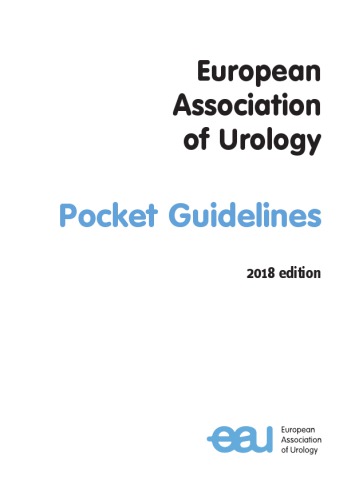Product desciption
European Association Of Urology Pocket Guidelines 2018 European Association Of Urology by European Association Of Urology, James N’dow 9789492671011, 9492671018 instant download after payment.
We are pleased to present the 2018 edition of the European
Association of Urology (EAU) Guidelines. The EAU Guidelines
are the most comprehensive, continuously updated,
guidelines available for urologists and related specialties.
Produced by a dedicated Guidelines Office, involving
approximately 300 international experts drawn from across
Europe and beyond, the EAU Guidelines are internationally
recognised as an excellent, high-quality, resource for assisting
clinicians in their everyday practice.
Clinical guidelines are a highly influential tool for improving
clinical care, unifying healthcare provision and managing
healthcare-associated resources across Europe and beyond.
Consequently, they must be transparent, free of bias, give a
balanced account of risks and benefits and take into
consideration patient preferences. To this end, the 2018
guidelines sees the implementation of a new system for
grading guidelines recommendations based upon a
modified GRADE (Grading of Recommendations Assessment,
Development and Evaluation) approach. Consequently, each
and every recommendation contained within the guidelines,
along with the evidence underpinning it, has been reassessed
and a Strength Rating Form produced (posted online at:
www.uroweb.org/guidelines). Recommendations now take
into account the available evidence, the strength and overall
quality of that evidence, the balance between desirable and
undesirable consequences of any given recommendation
compared with alternative interventions, whilst also taking
into account patients’ values and preferences. A further
change can also be found in the way in which the strength of
2 Introduction
each recommendation is represented. Recommendations are
no longer denoted by alphabetic characters, but rather by the
words ‘strong’ or ‘weak’, with each panel providing both ‘strong’
and ‘weak’ recommendations ‘for’ or ‘against’ a specific
intervention. We hope that you find the new format useful and
that they provide helpful, clear and unambiguous guidance.
Going forward, a key aim of the EAU Guidelines office is to
increase patient involvement in Guidelines development.
The ultimate aim of this project being the establishment of
an effective framework that can ensure that the voices of
patients are captured in the development of future guidelines
recommendations. The EAU Guidelines Office believes that
structured patient engagement will result in
recommendations that lead to better treatment compliance
and improved health outcomes. This promises to be a
challenging but a worthwhile long-term endeavour.
The annual publication of the EAU Guidelines would not
be possible without the steadfast support of every user of
the Guidelines globally, our EAU membership, our greatly
respected Guidelines Panels, Guidelines Associates, the EAU
Executive Committee and Management team and, last but not
least, the National Societies. So, on behalf of the EAU Guidelines
Office Board, thank you for your support and inspiration.
We hope you find the 2018 update of the EAU Guidelines a
pleasure to use!
Prof. James N’Dow
Chairman EAU Guidelines Office


